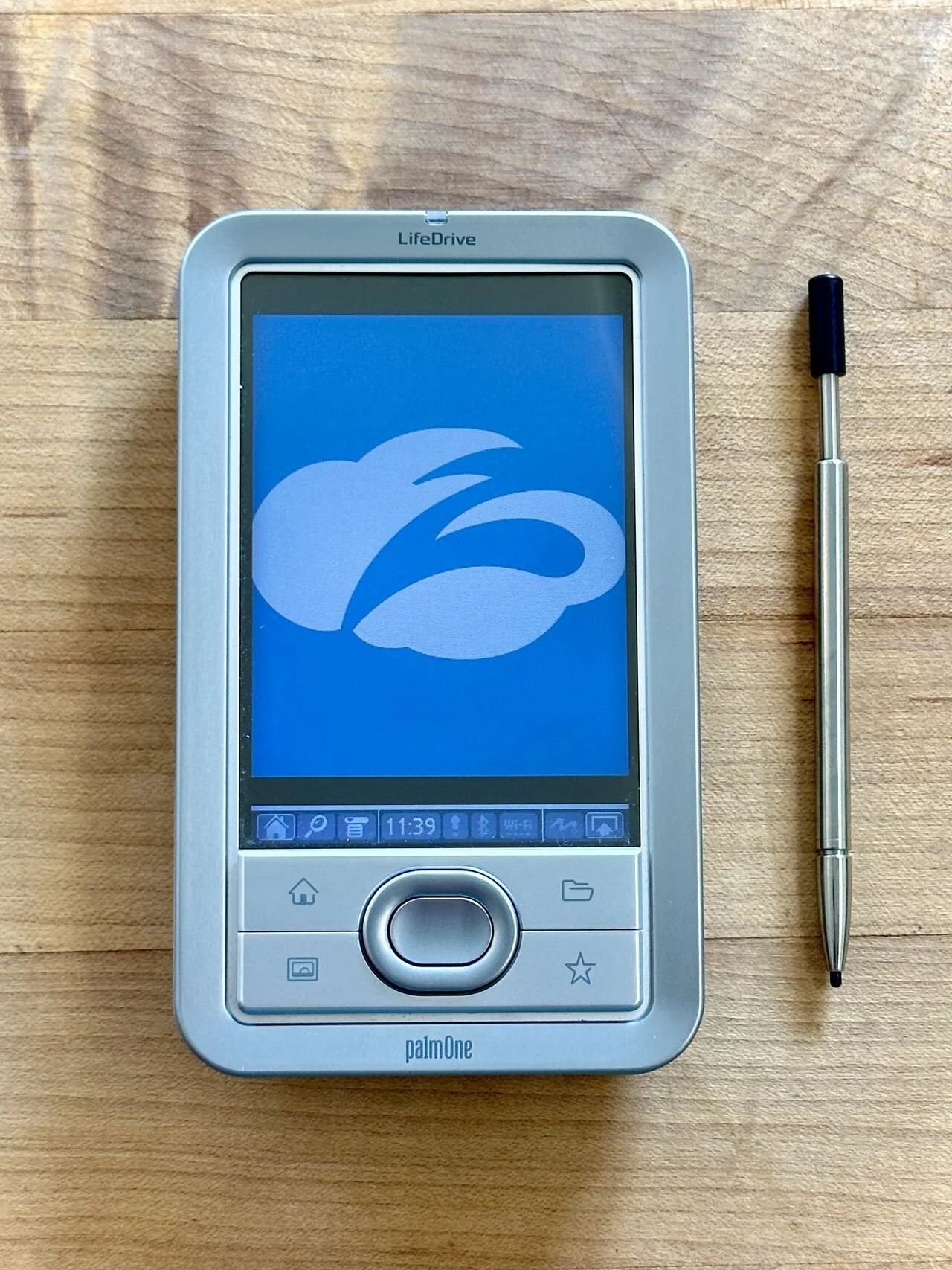Palm LifeDrive
For what (or may not!) be the final 2022 entry in my never-ending “Zscaler Logo on a Weird, Old or Obsolete Device” series, I’m excited to showcase the newest addition to my collection: a Palm LifeDrive!
The LifeDrive hits all three marks noted above: it’s old (~18 years), it’s definitely obsolete (both Palm and their PalmOS platform are long dead), and best of all, it’s *very weird.*
While Palm Inc. didn’t invent the PDA or “Personal Digital Assistant,” their early “Palm Pilot” devices definitely popularized the idea of a small handheld digital assistant. Unfortunately for Palm, by the early 2000’s their once-dominant position in the PDA market was rapidly eroding. Consumer demand was shifting towards other types of handheld devices - most notably Apple’s iPod for media playback, and early “smartphones” which could do many of the same basic organizational tasks that a Palm could do, while also having voice and data connectivity.
Palm wasn’t ready to give up though, and in 2005 they launched the LifeDrive, a technological powerhouse showcasing virtually every feature Palm could cram into a handheld. In addition to a 416MHz Intel Corporation CPU, 16-bit color display, WiFi, Bluetooth, and 64 megs of RAM, the LifeDrive had one more trick up its sleeve: it had a tiny 4GB mechanical “MicroDrive” hard disk!
Unlike nearly all other handheld devices which use solid state (aka “chip”) storage, the LifeDrive literally has a tiny spinning hard disk inside, roughly the size of a postage stamp. In an era when typical PDA’s had perhaps 8 or 16 megabytes of built-in storage (enough for a bunch of documents or a few pics), having over 4,000 megabytes of storage meant that the LifeDrive could directly compete against other high-capacity devices of the day - most importantly Apple’s iPod. With this in mind, the LifeDrive has all the typical PDA apps you’d expect to find (notes, calendar, contact book, etc.) along with a variety of multimedia apps including “pTunes,” the unfortunately-named alternative to Apple’s iTunes. With its enormous (by 2005 standards) storage capacity, the LifeDrive can store tons of songs, photos, videos and other multimedia content with ease.
Thankfully the cost of solid state storage chips fell swiftly, and this was the only Palm device that ever shipped with a mechanical hard drive. It’s been tough to find a LifeDrive in good working condition, so you can understand why I’m so happy to have found this one recently. Many of the tiny / delicate MicroDrives are long since dead, and while they can be replaced by a CompactFlash card, there’s just something so delightfully weird about hearing a high-pitched whine and feeling the subtle vibration of a spinning drive inside a handheld like this! Fingers crossed that this LifeDrive has many more years of smooth operation ahead of it!
That’s it for today - have a great weekend and happy + safe holiday season!
